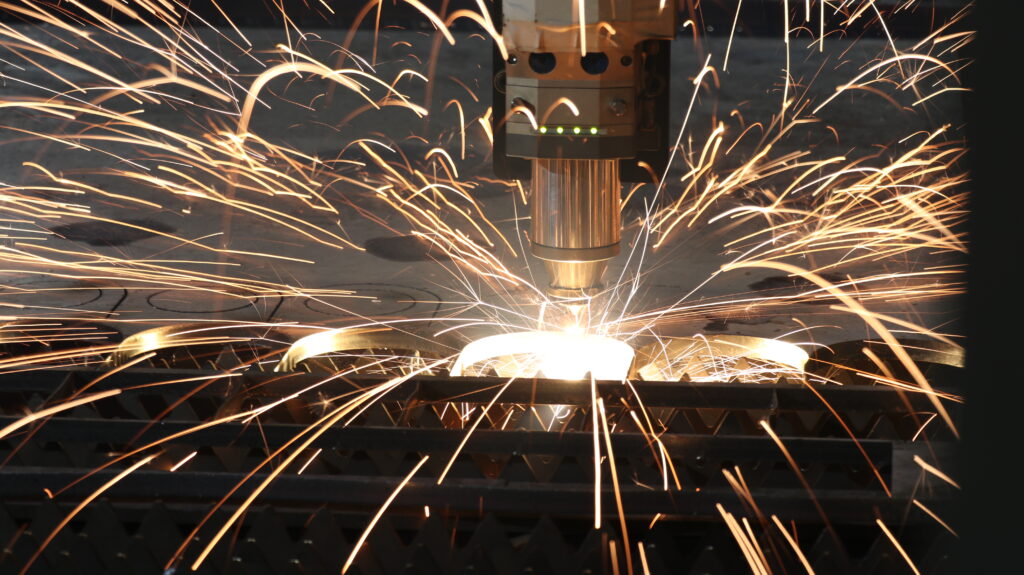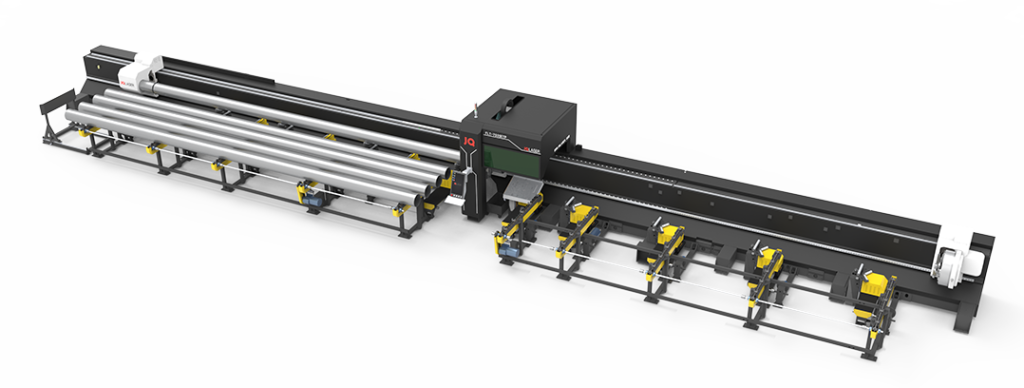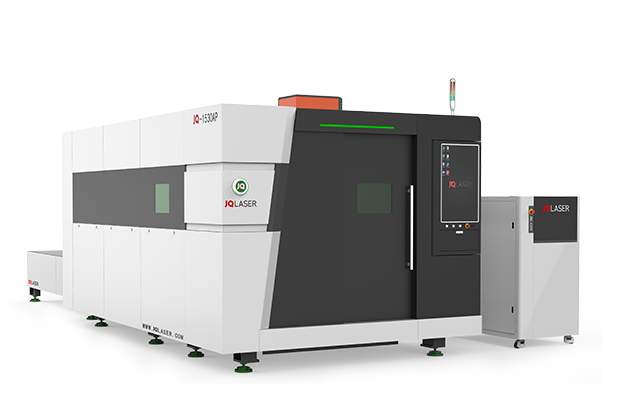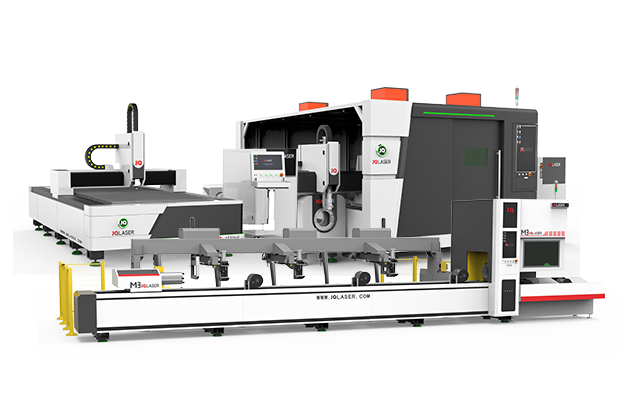What Is a Fiber Laser?
A fiber laser is a type of laser that uses a long, thin strand of glass or other transparent material to guide and amplify light. The word “fiber” in this context refers to the waveguide, not to any fibers that might be used in making the laser itself.
Fiber lasers are different from other types of lasers in several respects. First, they can be made very compact, because there is no need for a resonator cavity (the mirrors that define the laser beam path). Second, they can be very efficient, because all of the light is confined within the glass fiber. And third, they can operate at very high powers—kilowatts or more—because there is no risk of damaging the mirrors. Meanwhile, fiber lasers have many applications, including cutting and welding metal, engraving, and marking.
How Does a Fiber Laser Work?
A fiber laser is a laser that uses an optical fiber as its gain medium. It is a type of solid-state laser that can be used for various applications such as cutting, welding, and marking.
How does a fiber laser work? A fiber laser uses a glass or plastic fiber as its gain medium. The core of the fiber is optically pumped with diode lasers. This pump light is absorbed by the rare-earth element dopant in the core, which then amplifies the light. This amplified light is then passed through the fiber to the output coupler, where some of it is extracted to create the laser beam.
The main advantage of a fiber laser over other types of lasers is that it can be easily scaled to higher powers. Fiber lasers are also more efficient than other types of lasers, meaning that they require less energy to operate.
What Is a CO2 Laser?
A CO2 laser is a type of laser that uses a carbon dioxide gas mixture. It is commonly used in industrial and medical applications. CO2 lasers are the most versatile of all lasers, and they can be used for cutting, welding, and engraving. They are also able to produce very high power levels.
How Does a CO2 Laser Work?
A CO2 laser consists of three main parts: a gas discharge tube, a resonator, and a power supply. The gas discharge tube contains a mix of CO2, nitrogen, and helium. When an electrical current is applied to the gas mix, it produces light.
This light is then amplified by the resonator, which consists of mirrors that reflect the light back and forth through the gas discharge tube. This amplifies the light until it reaches a high enough level to be emitted from the laser.
The power supply provides the electrical current that is needed to produce the light in the gas discharge tube.
Pros and Cons of Each
Advantages of CO2 Laser
There are many advantages of using a CO2 laser for medical and industrial purposes. Here are some key reasons why this type of laser is so beneficial:
1. CO2 lasers can be used to remove very thin layers of material from surfaces without damaging the surrounding area. This makes them ideal for delicate surgery, such as removing cancerous tissue from organs.
2. CO2 lasers can also be used to weld materials together. This makes them ideal for repairing delicate electronic components and devices.
3. CO2 lasers are very precise, meaning that they can be used to create very intricate designs and patterns. This makes them ideal for use in the manufacturing process of semiconductors and other high-tech products.
For example, Laser surgery has been used for many years to treat a variety of conditions. CO2 laser surgery is a type of laser surgery that uses a beam of light to remove tissue.
CO2 laser surgery has many advantages over other types of surgery. First, it is very precise. The beam of light can be focused on a very small area, which means that less healthy tissue is damaged. Second, CO2 laser surgery is less invasive than other types of surgery. It does not require cutting through the skin, and there is no need for stitches. Third, CO2 laser surgery is relatively quick. The procedure can often be done in less than an hour. Finally, CO2 laser surgery typically has a short recovery time. Most people can return to their normal activities within a few days. Thus, CO2 laser surgery is an effective and safe treatment option for many conditions.
The disadvantage of CO2 Laser
While there are many advantages to using a CO2 laser for medical procedures, there are also some disadvantages. One of the biggest disadvantages is that the CO2 laser can cause tissue damage. This means that patients may experience pain and discomfort after the procedure. Additionally, the CO2 laser can also cause scarring. This can be a problem for patients who want to avoid visible scars. Finally, the CO2 laser is expensive, which means that not all patients will be able to afford this type of treatment.
Advantages of Fiber Laser

Fiber laser technology has a number of advantages over other types of lasers, making it the preferred choice for many applications. Here are just a few of the advantages that fiber lasers have to offer:
1. Increased Efficiency: Fiber lasers are more efficient than other types of lasers, meaning that they require less energy to operate. This makes them more cost-effective to use, as well as better for the environment.
2. Greater Flexibility: Fiber lasers can be easily customized to meet the specific needs of each application. This flexibility means that they can be used for a wide range of tasks, from cutting and welding to engraving and marking.
3. Superior Quality: Fiber lasers produce a higher quality output than other types of lasers, with cleaner cuts and more precise results.
The disadvantage of Fiber Laser
1. While fiber lasers have many advantages, there are also some disadvantages to using this technology.
2. One of the main disadvantages of fiber lasers is their high cost. Fiber lasers are often more expensive than other types of lasers, which can make them difficult to justify for some applications.
3. Another disadvantage of fiber lasers is that they can be difficult to work with. Because they use light that is focused into a very small beam, it can be challenging to align and maintain the laser in the proper position. This can make it difficult to use fiber lasers for some applications where precision is required.
4. Finally, fiber lasers can also be more complex and have more moving parts.
The Differences between CO2 and Fiber Laser
There are many differences between carbon dioxide (CO2) and fiber lasers that affect their processing characteristics.
Differences in processing characteristics
For example, CO2 lasers have a much lower electron density in the gain medium than fiber lasers. This means that CO2 lasers can only lase at relatively low frequencies, while fiber lasers can lase at much higher frequencies. Additionally, CO2 lasers have a larger wavelength than fiber lasers. This means that CO2 lasers will have a lower diffraction limit, and thus can create smaller features on a workpiece. Finally, CO2 lasers typically have much lower power levels than fiber lasers. This means that they can not be used for high-power applications such as cutting thick metal sheets.
Differences in cutting material
Each type of laser has its own advantages and disadvantages when it comes to cutting different materials.
CO2 lasers are better at cutting thicker, more heat-resistant materials such as stainless steel and aluminum. They can also cut faster than fiber lasers, making them a good choice for high-production environments. However, CO2 lasers are less efficient than fiber lasers and their beam quality is not as good, making them less ideal for cutting thinner materials.
Fiber lasers, on the other hand, are better suited for cutting thinner materials such as mild steel and titanium. They are also more efficient than CO2 lasers, meaning they use less power and generate less heat.
Differences in cutting efficiency
the edge over CO2 lasers. This is because fiber lasers can be focused to a smaller spot size, which allows for more precise cuts.
Differences in application
CO2 and fiber lasers have many differences in their application. CO2 lasers are best for cutting and engraving non-metallic materials like wood, glass, plastic, and leather. They are also used in some medical procedures. Fiber lasers are better for cutting metal because they can create a smaller heat-affected zone. This means that there is less of a chance to distort the metal when using a fiber laser. Fiber lasers can also be used for engraving but they are not as common as CO2 lasers for this purpose.
Conclusion
CO2 lasers have been around for longer than fiber lasers and are typically more powerful, making them ideal for cutting thicker materials. They’re also better at the engraving on surfaces that reflect light, like metals. However, CO2 lasers are less efficient than fiber lasers and can be more expensive to operate.
Fiber lasers are newer technology but have quickly become popular because they’re more efficient than CO2 lasers and can be used to cut a variety of materials, including metals, plastics, and glass. Fiber lasers are also smaller and easier to maintain than CO2 lasers.
In conclusion, fiber lasers have many advantages over CO2 lasers. They are more energy efficient, have a higher beam quality, and can be used for a wider range of applications. Fiber lasers are also easier to maintain and have a longer lifespan. If you are considering a laser for your business, a fiber laser is the better option.





